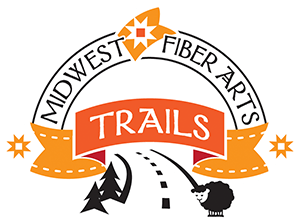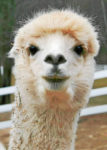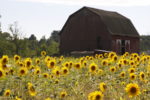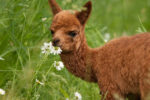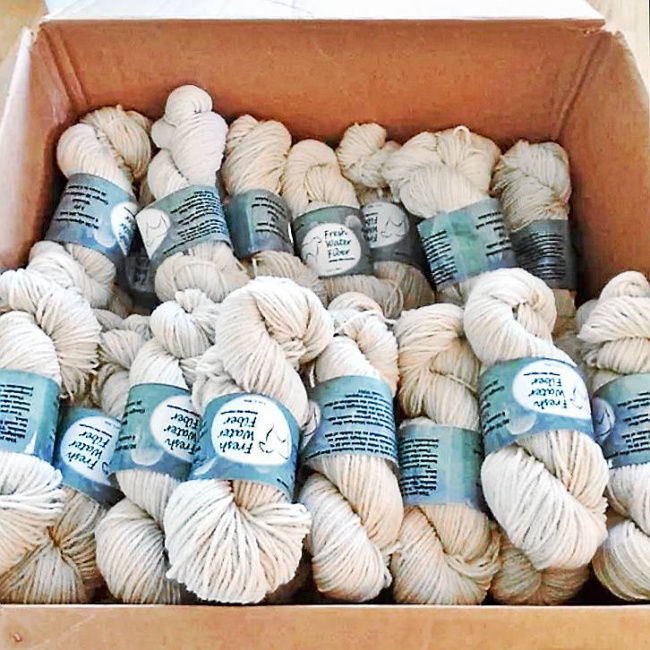Dear Friends,
To give you a little background, I frequently receive ‘Contact Me!’ emails from my website. Sometimes they are a cryptic one-liner stating, “Please list my event.” Which I’m very happy to do—if I know which event they are talking about! There’s usually a bit of back and forth and we get it squared away. When Bridget contacted me in August I dropped the ball but rallied in November! Yes, November. I’m usually on top of things, so when the conversation picked up again, I was ready! Bridget Kavanaugh is a part of the new fiber cooperative in Michigan.
Immediately I was curious not only about their products, but how a cooperative works. There is a legal definition for such entities and I wanted to know more because of my keen interest in fiber arts in rural settings and family roots in agriculture. I’ve met quite a few sheep and alpaca farmers/shepherdesses/shepherds and I know it takes a lot of hard work to see even a small yield. Normally I would be thinking ag commodities such as corn, soybeans and wheat but when you’re talking fiber (or beer), replace the word commodity with small batch.
- Photo courtesy of Michigan Fiber Cooperative.
- Photo courtesy of Via Verde Farm.
- Photo courtesy of Via Verde Farm.
How can they make it?
Last week, I spent some time talking with Tamara Miller and Sheila Miller; board members at the Michigan Fiber Cooperative (MFC). MFC is a group of eleven small family farms who joined efforts to reach the marketplace by pooling their resources. It’s working! All eleven co-op members have made the choice to live on a farm, raise their children in a rural setting and embrace the rural life of early morning chores, short stays away from the livestock (if at all) and to put themselves on the front line of risk. This is typical of all farms who own livestock; animals are a 24/7 commitment and need responsible care.
I’m sure you’ve heard the phrase ‘sheep to shawl.’ If you have attended a fiber festival no doubt you’ve met sheep and alpaca farmers who run a vertical operation. They are the sheep to shawl. We consumers who knit the shawls are the last step in a long risk-laden process whose output is that lovely natural or hand-dyed fiber. So, where is the value-added proposition in being a part of a farmer-owned cooperative? I’d say the value is scale. If the farm life suits your family and a herd means thirty head rather than 3000, there’s an advantage to pooling resources and distribution.
A smart start
I feel one of the most interesting aspects of their organization is how they so wisely relied on outside expertise during their research and start-up phase. Starting an organization is so much more than ‘high level thinkers’ or a bunch of good ideas. It takes knowledge and resources with expertise in your area of business. In 2011, the initial members of this group (led by the above-mentioned Bridget) contacted the Michigan Department of Agriculture and Rural Development (MDARD) for assistance in becoming a cooperative and MDARD connected them to Michigan State University’s Product Center who assigned them a person. They got a person!! MDARD also helped MFC to navigate the funhouse of grant applications. To date, MFC has been awarded several grants ranging from $5,000 to $15,000.
MFC spent the first couple years defining and refining their mission while looking at end uses of their product; which is clean fiber in a variety of forms. Not only fiber for hand knitting yarn, but for commercial uses, too. Their website reads, “Animal fleece and fiber includes everything from Alpaca to Yak, but is most commonly associated with wool. These products can be felted, spun and woven into garments, car seats, rugs, boots, and even insulation.” For the first few years in their product development life cycle, MFC’s product is knitting yarn. They are considering additional product lines, but for their initial foray into gathering, production and distribution, they’re sticking to the knitting.
It’s impossible to spin beautiful yarn out of low quality materials. Good animal husbandry begins way upstream while the animal is growing its coat. Farm education improves farm operations, pasture management (what’s the best way to keep thistles out of the pasture?) and hay nutrition which maximizes fleece yield. Once again, MFC taps the expertise at Michigan State University’s Extension Service who shares best practices in these areas with co-op members.
First product
MFC’s spun fiber is a 50/50 combination of alpaca and merino wool. Not just any fleece makes the cut, though. All fleece is skirted (the process of removing undesirable parts) when co-op members drop off the fleece for processing. If the fleece isn’t good enough, it is not accepted. Then the member’s fleece is weighed and when all co-op members’ fleeces are ready they’re bagged and sent to the northern Michigan mill for processing into yarn.
2017 was the first year MFC was in full swing and they produced 500 pounds of raw fiber which translates into 1000 skeins of worsted weight wool. A 4-ounce skein is approximately 200 yards. In our phone conversation, it was proudly pointed out to me that 90% of the yield has been sold since summer, 2017. The brand name for their yarn is Fresh Water Fiber. An aptly named product considering Michigan is surrounded on three sides by great bodies of fresh water.
Right now, the fiber is a natural, creamy color. Businesses and co-op members can buy it at wholesale if they are set up as a business entity. This allows people to add value by hand-dyeing the fiber or purchase and re-sell the yarn at their shop. Currently six Michigan yarn shops carry the product retailing at $35.00 per skein.
Finally, I asked Tamara and Sheila about the intangibles of their grand project—what keeps them in the game? Without hesitation, they both replied friendship and community.
Best,
Jenny
